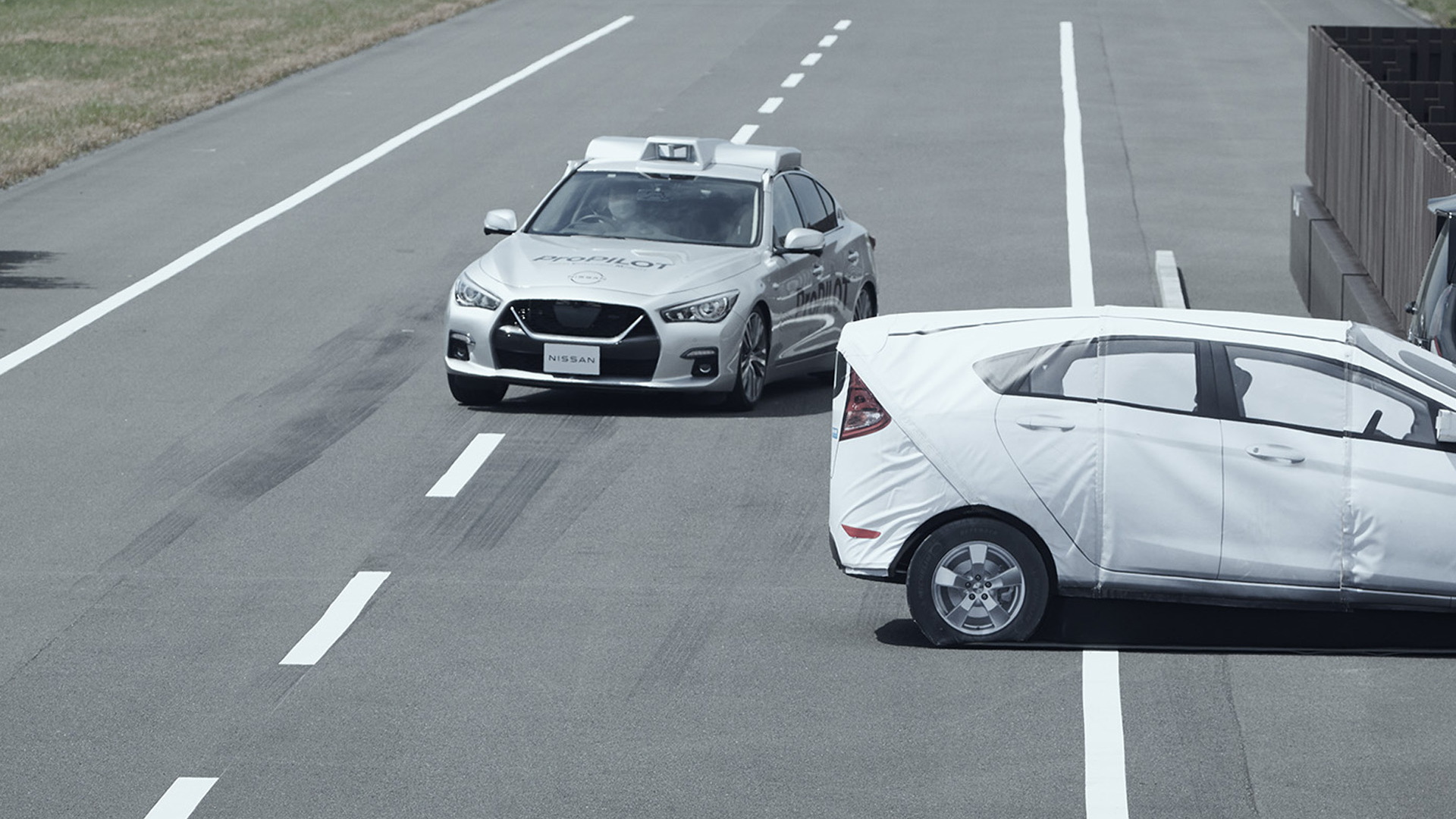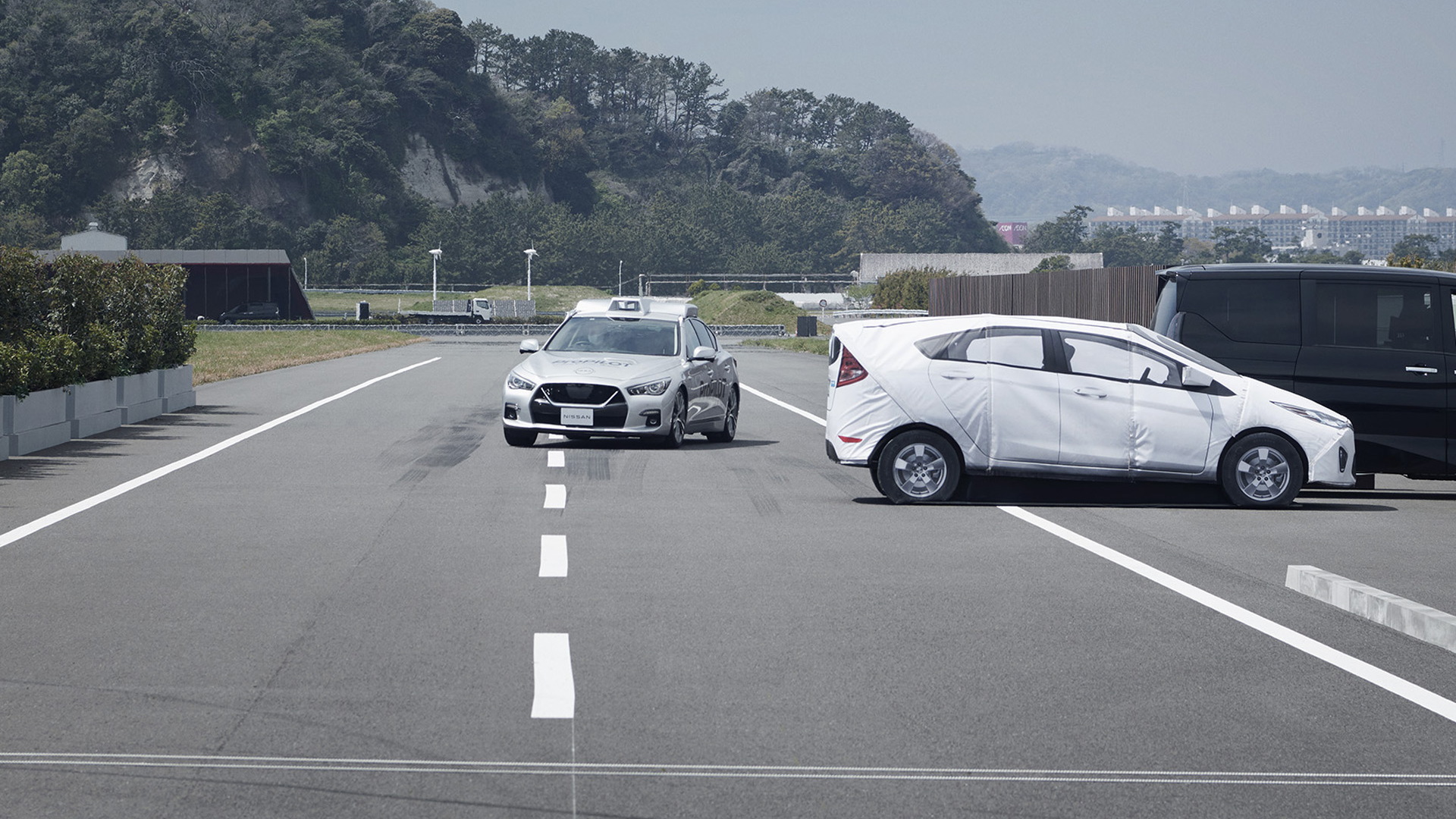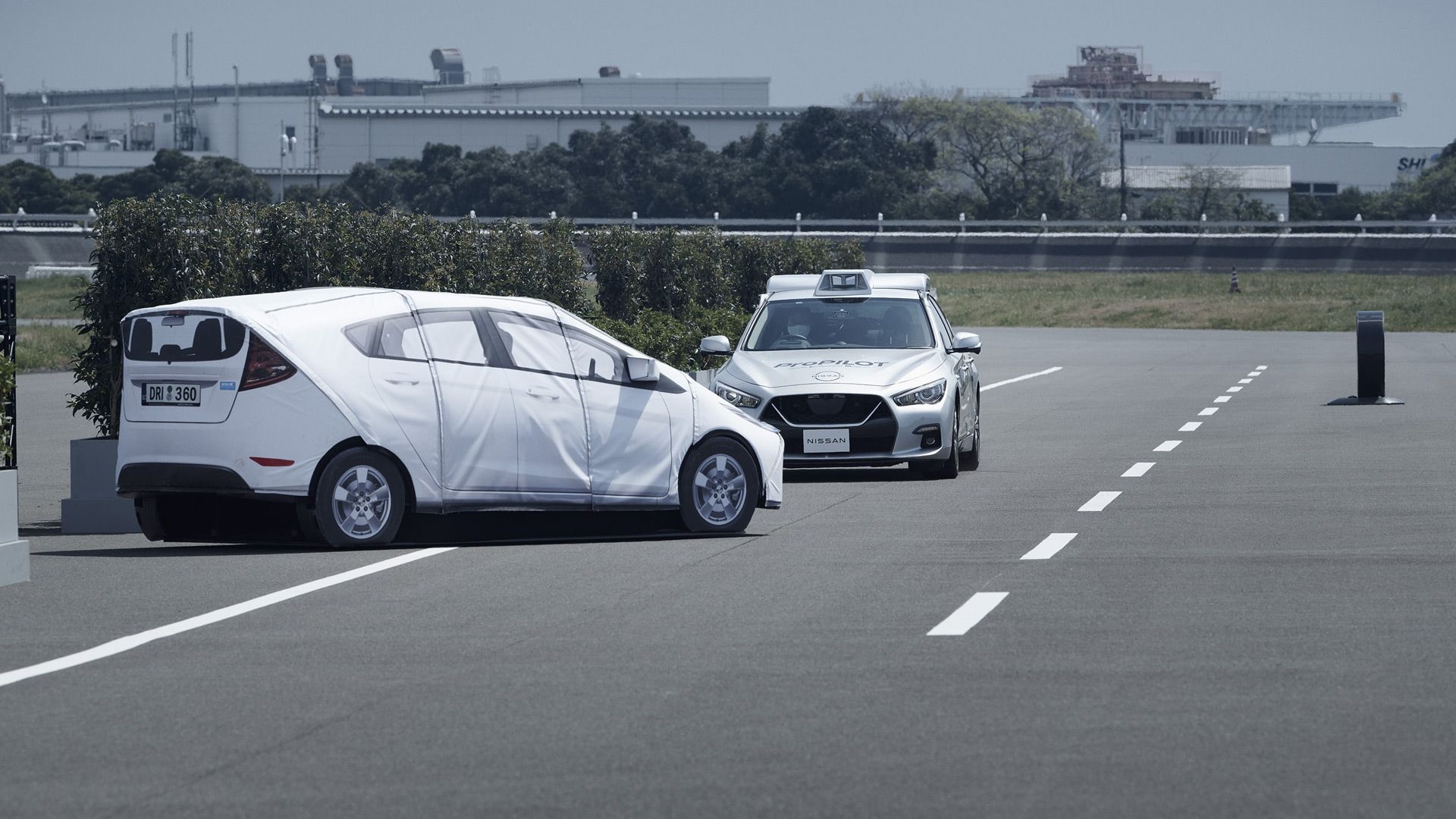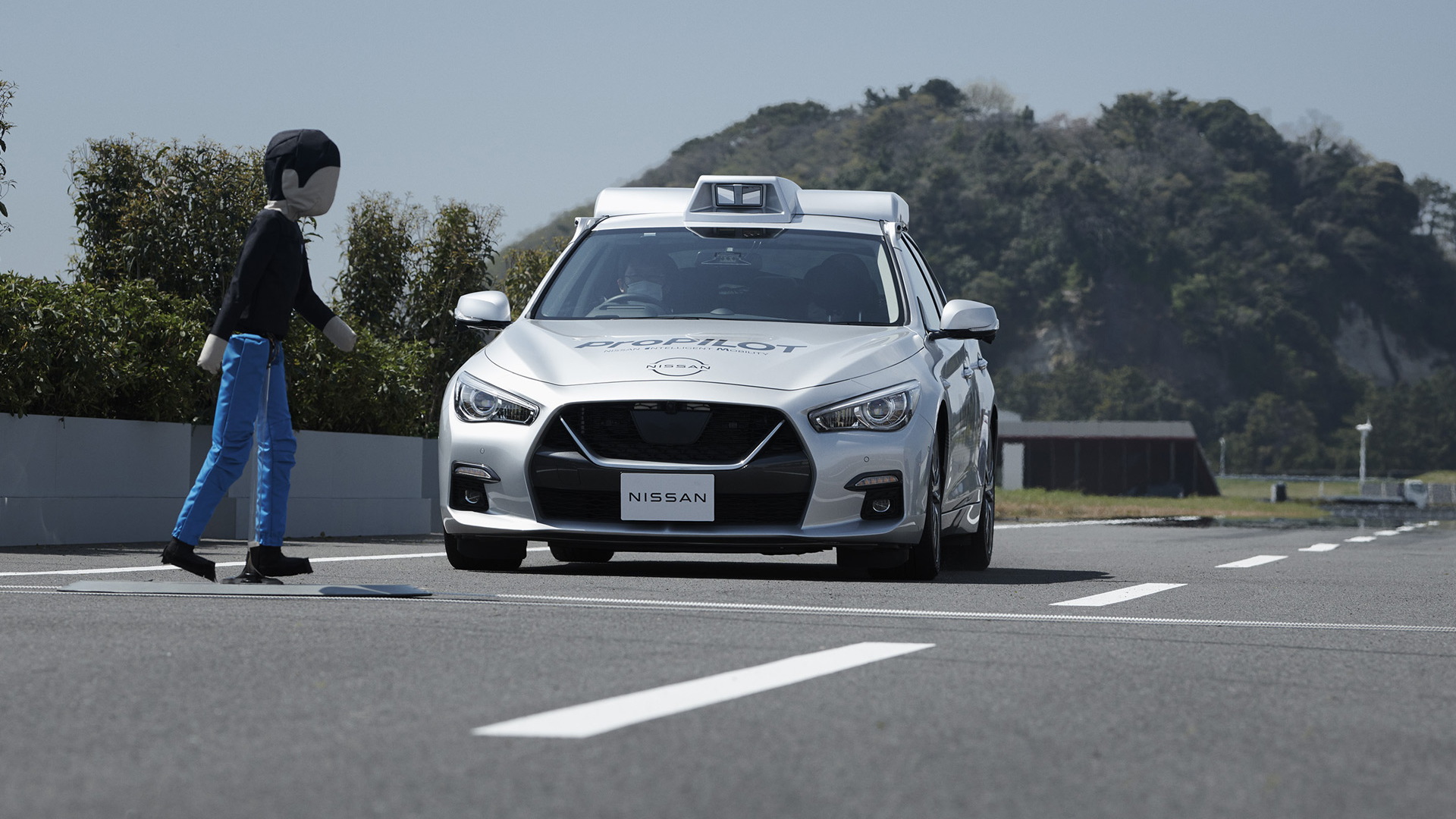Nissan recently demonstrated a Skyline sedan fitted with a still-in-development version of the automaker's ProPilot driver-assist feature.
The latest version adopts lidar detection to create a highly accurate view of a vehicle's surrounding environment in real time, to support much more capable collision-avoidance features than current automatic emergency braking features.
The Skyline sedan (sold in the U.S. as an Infiniti Q50) used in the demonstration was fitted with lidar, as well as radar and camera sensors. Information from these sensors is fused together to create a view of the environment in a process Nissan calls Ground Truth Perception.
Using this information, the Skyline sedan is able to judge a situation and automatically perform high-speed collision-avoidance operations, including changing lanes when necessary. The hazards could include a vehicle, person or even a rolling tire suddenly entering the lane or blocking multiple lanes, as well as slowed traffic up ahead. Nissan sees this as a key step on the road to full self-driving cars.
“We are confident that our in-development Ground Truth Perception technology will make a significant contribution to owner confidence, reduced traffic accidents and autonomous driving in the future,” Takao Asami, Nissan's head of global research and development, said in a statement.
Nissan is relying on lidar from America's Luminar for Ground Truth Perception. Other companies working with Luminar include Daimler Trucks, Mercedes-Benz and Volvo.
Nissan said it expects to complete development of its Ground Truth Perception technology by the middle of the decade. The technology will start filtering out to the first models shortly after that date, and by 2030 it should be available on every new model.
Nissan's existing version of ProPilot available in showrooms enables a vehicle to handle itself in a single lane during regular driving. It can also handle lane changes. In both cases the driver needs to be monitoring things and ready to take over at any time.






